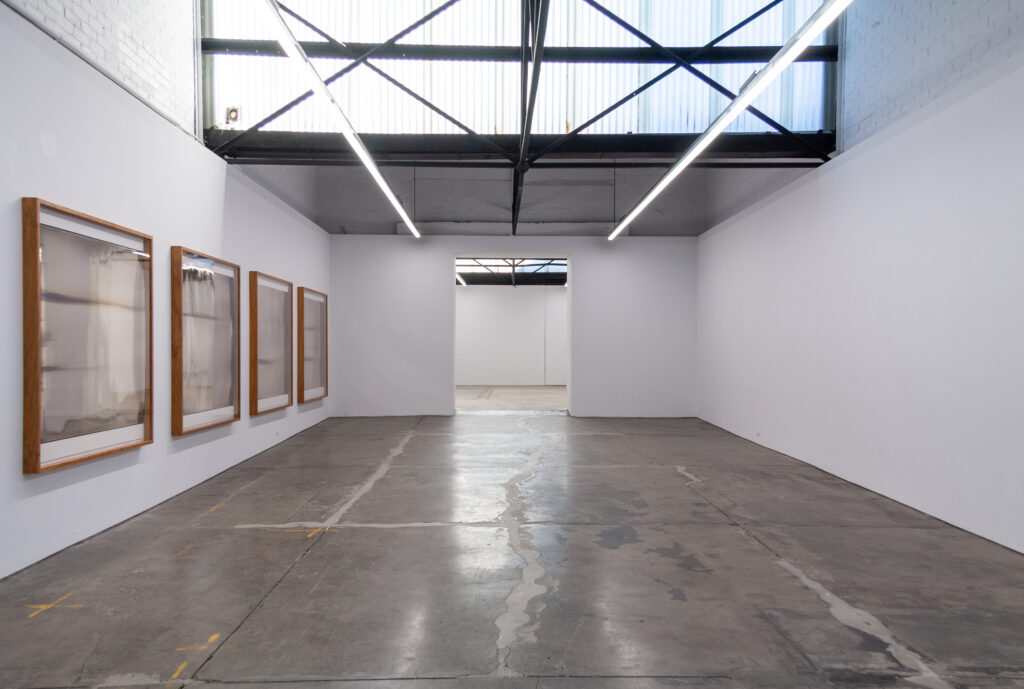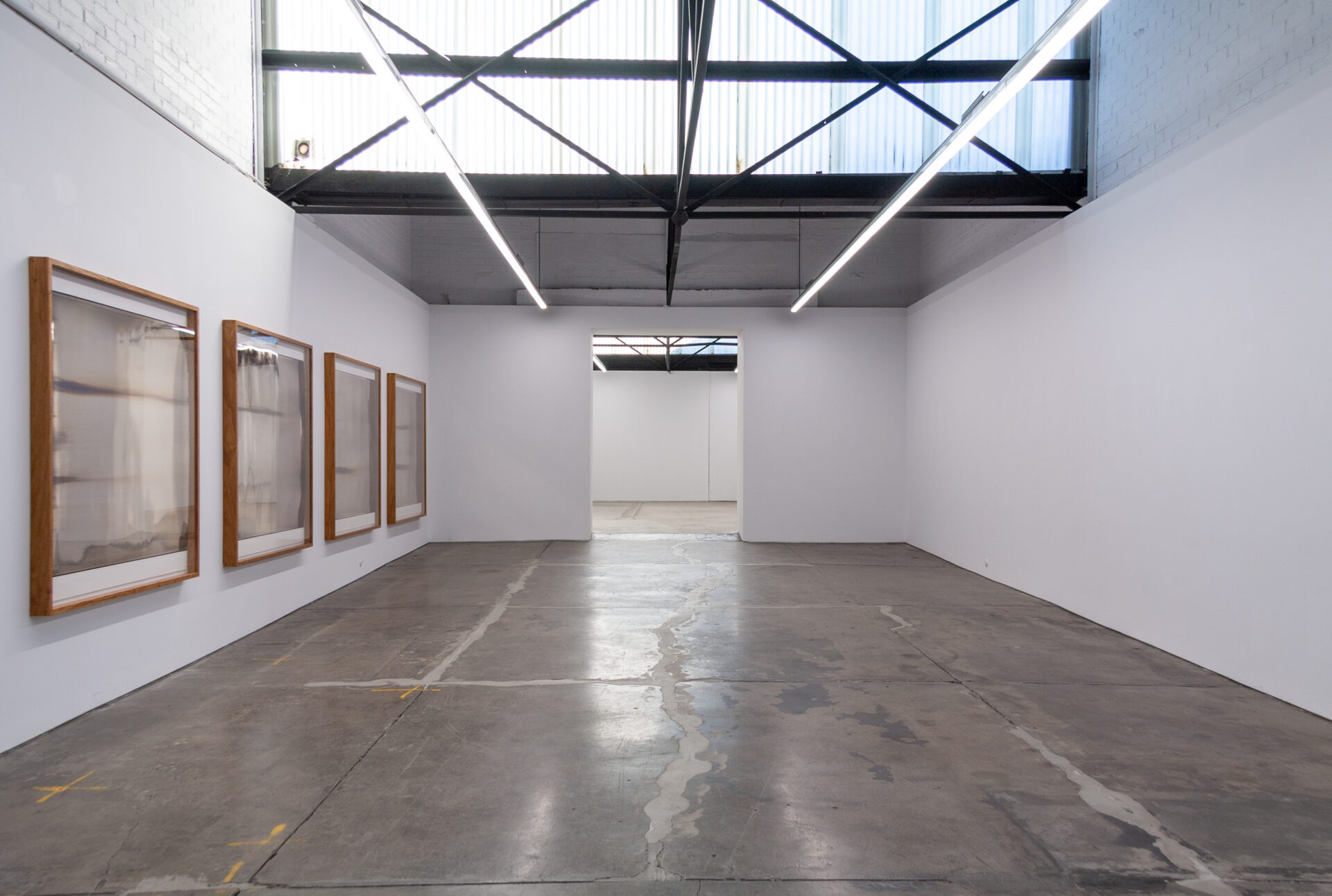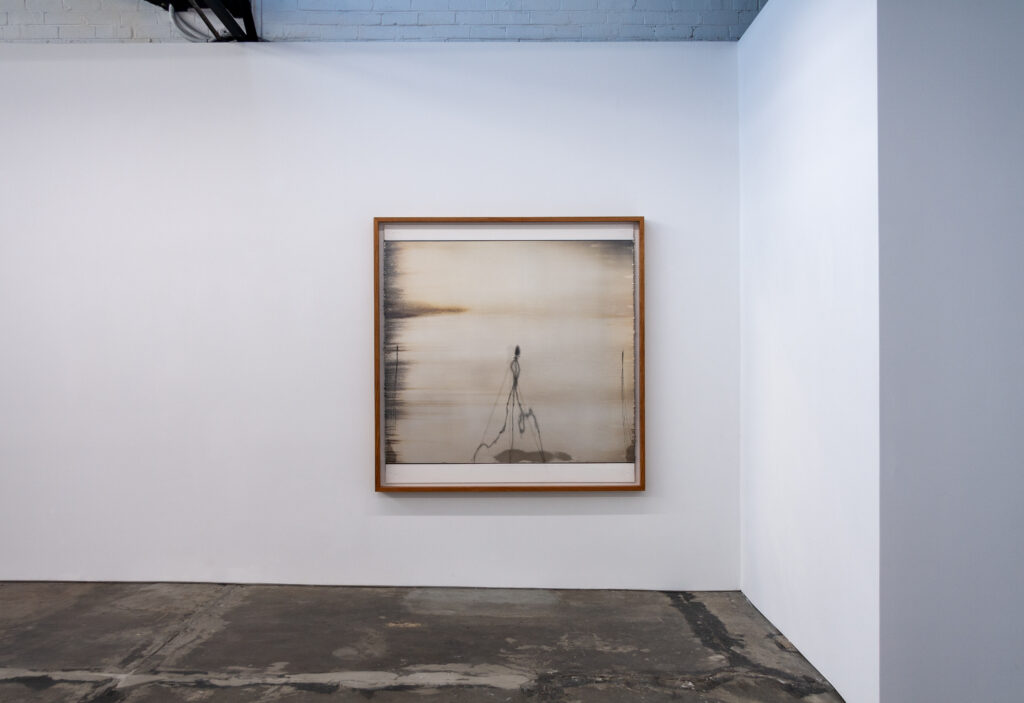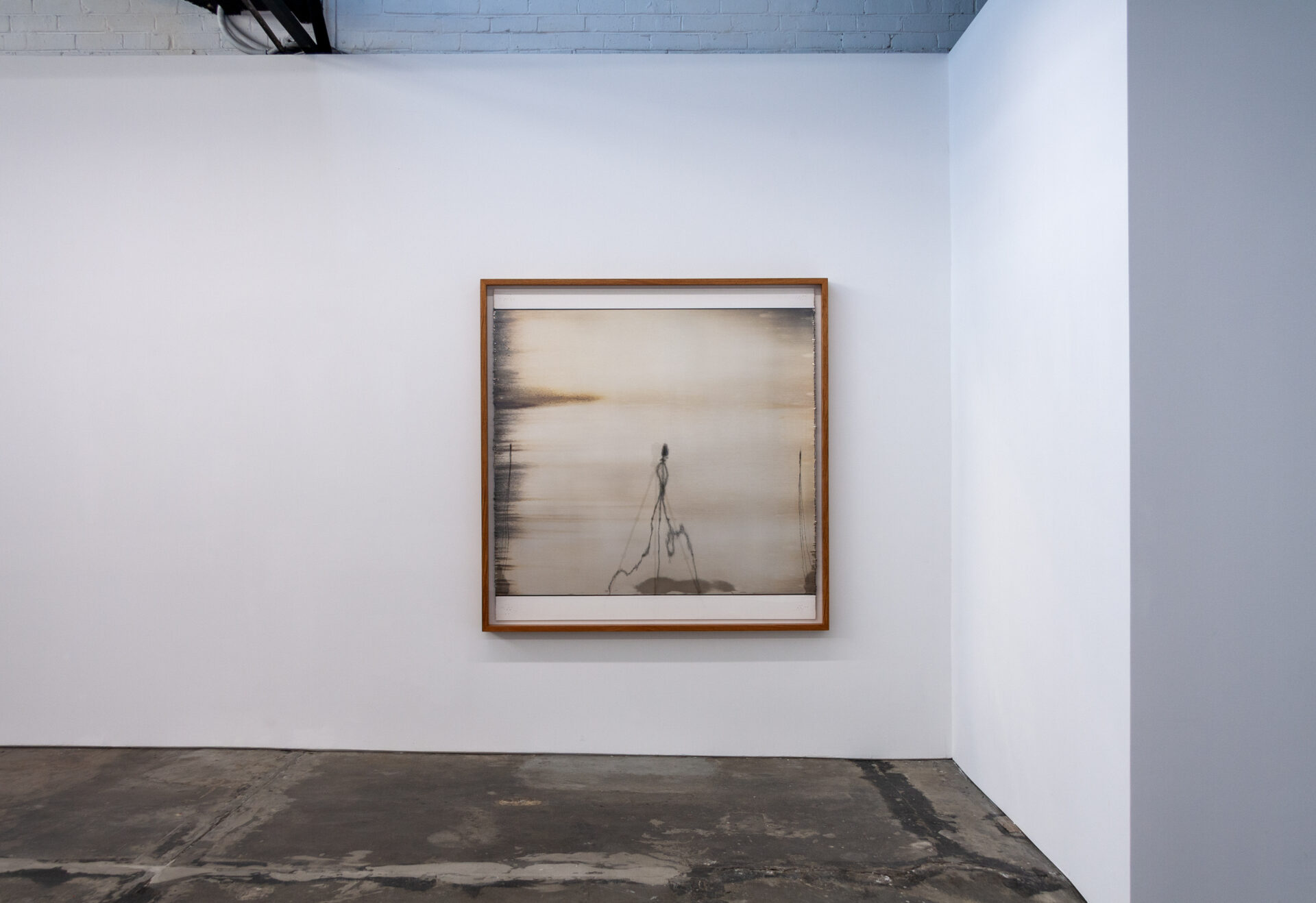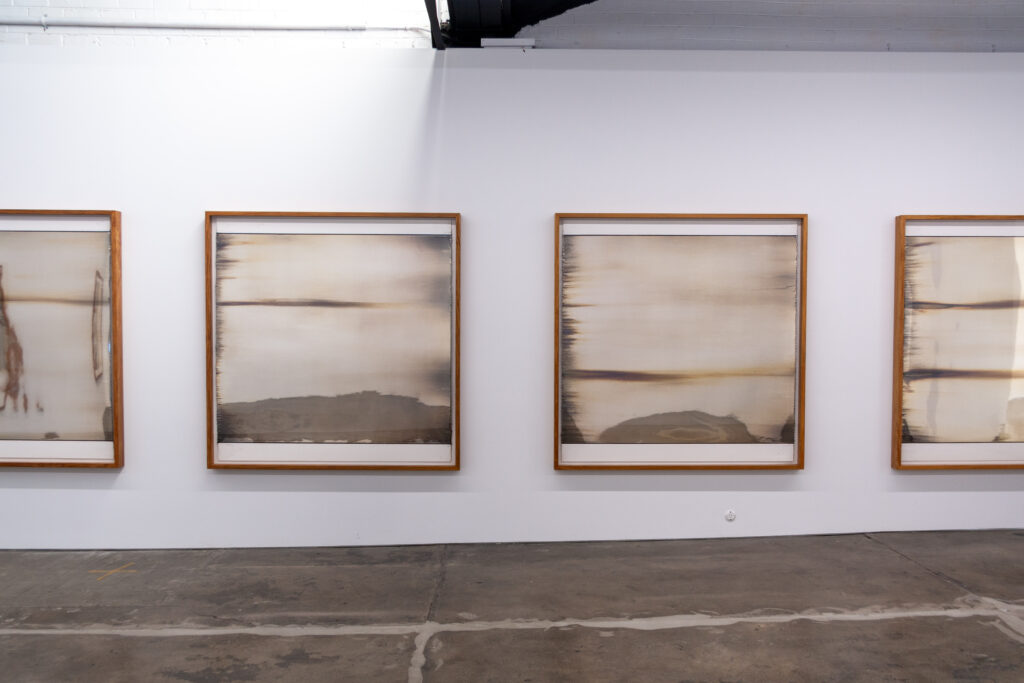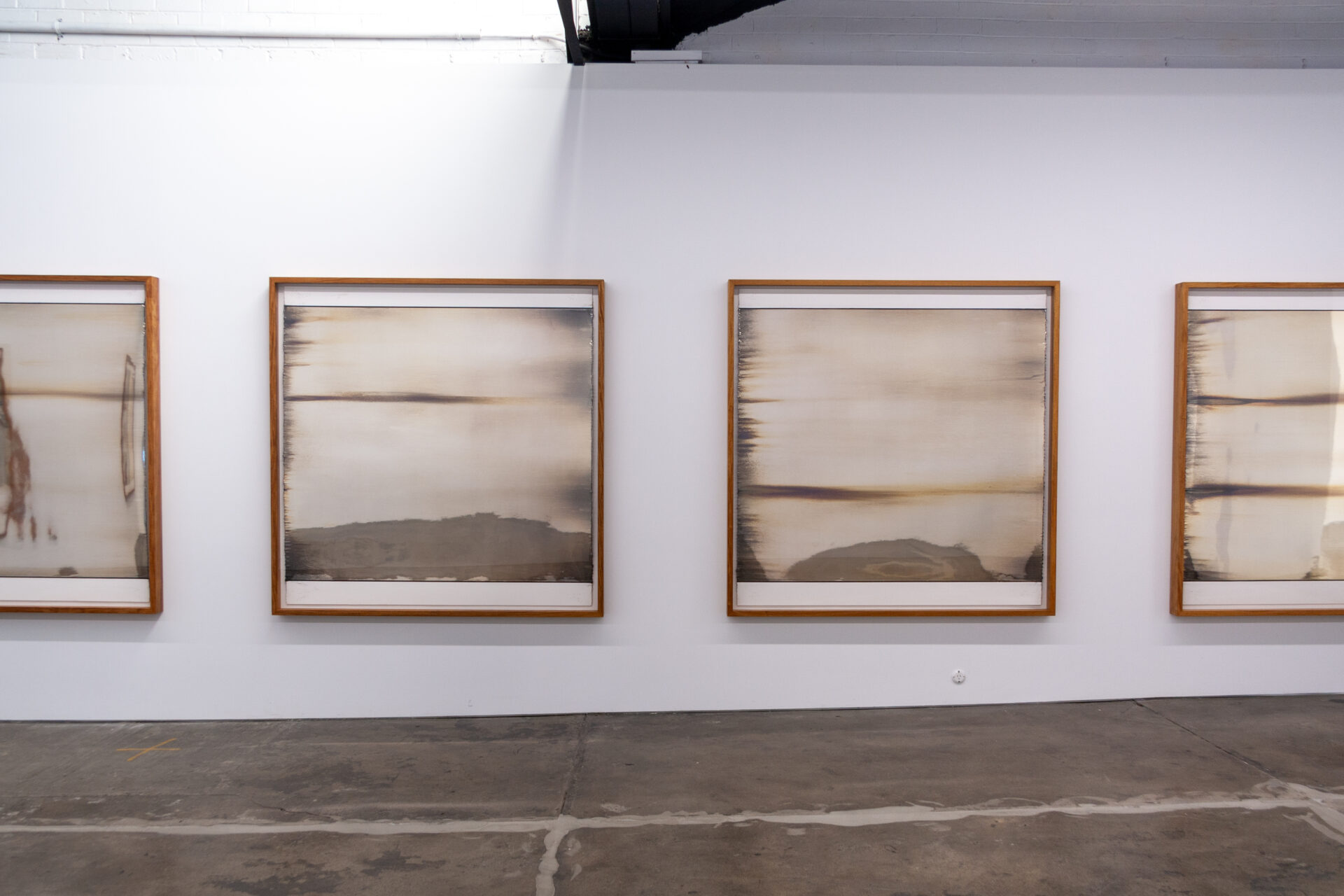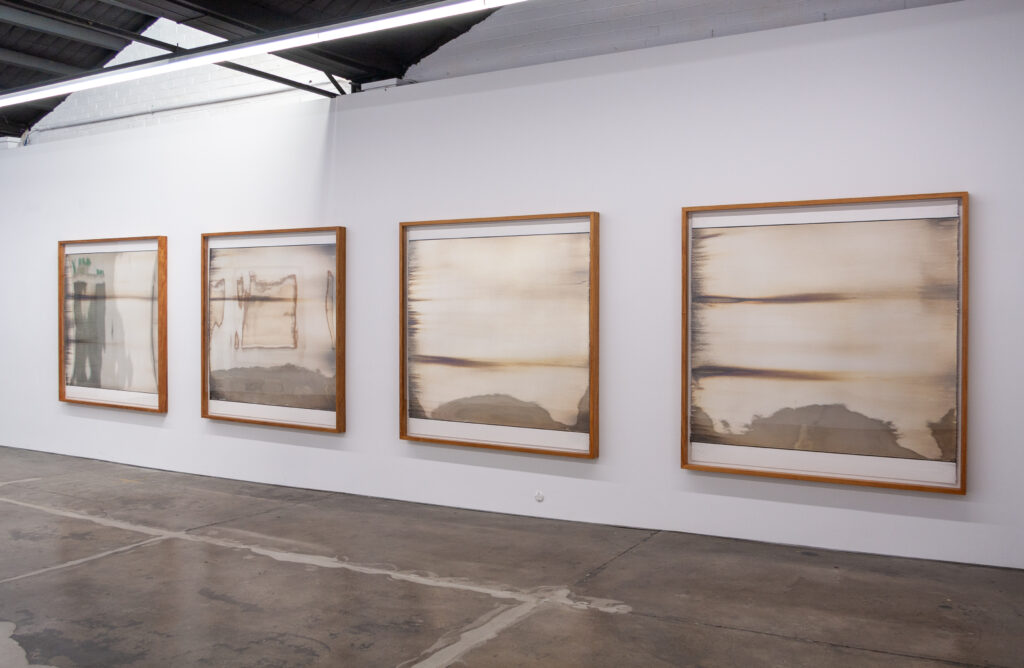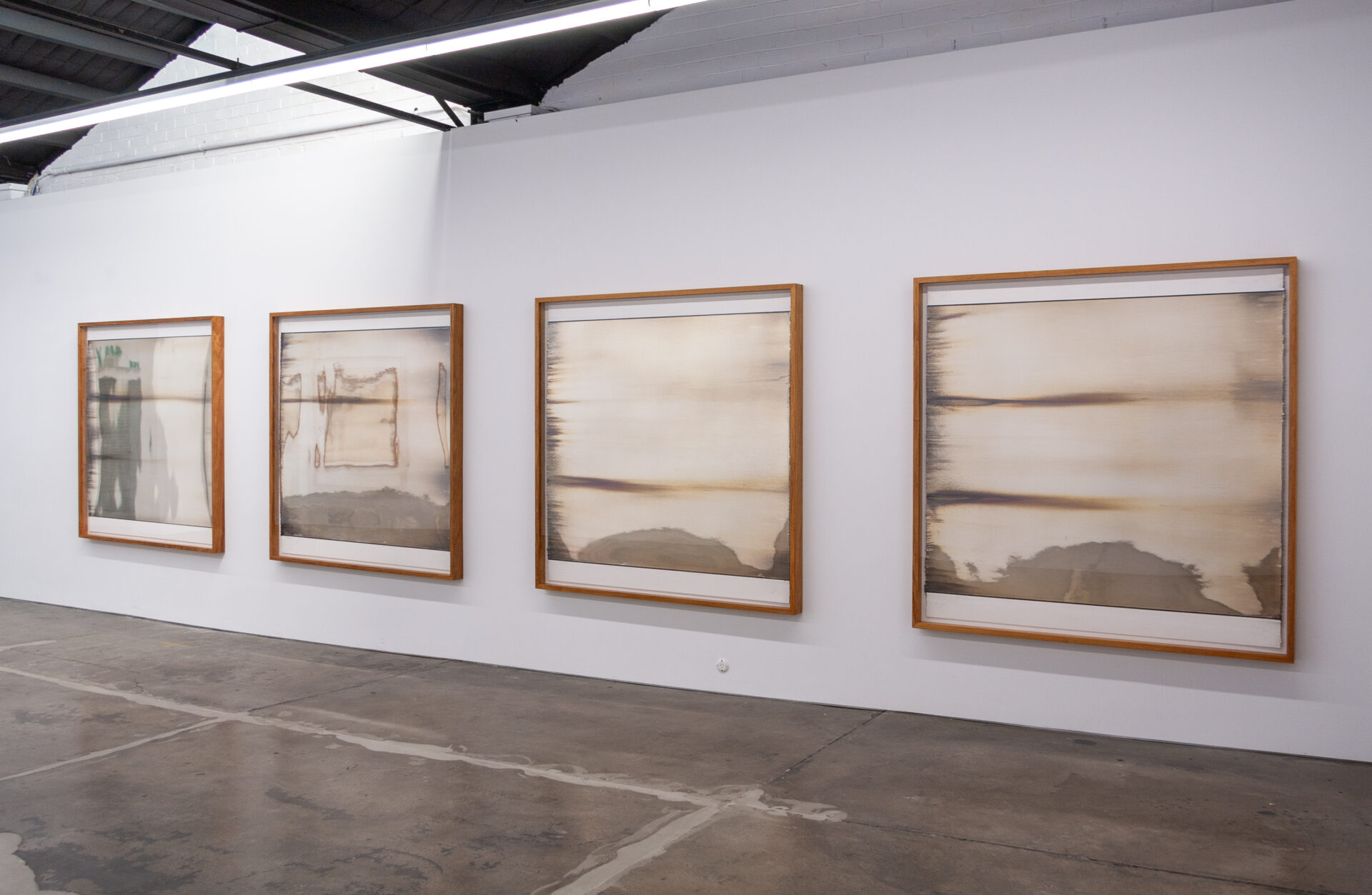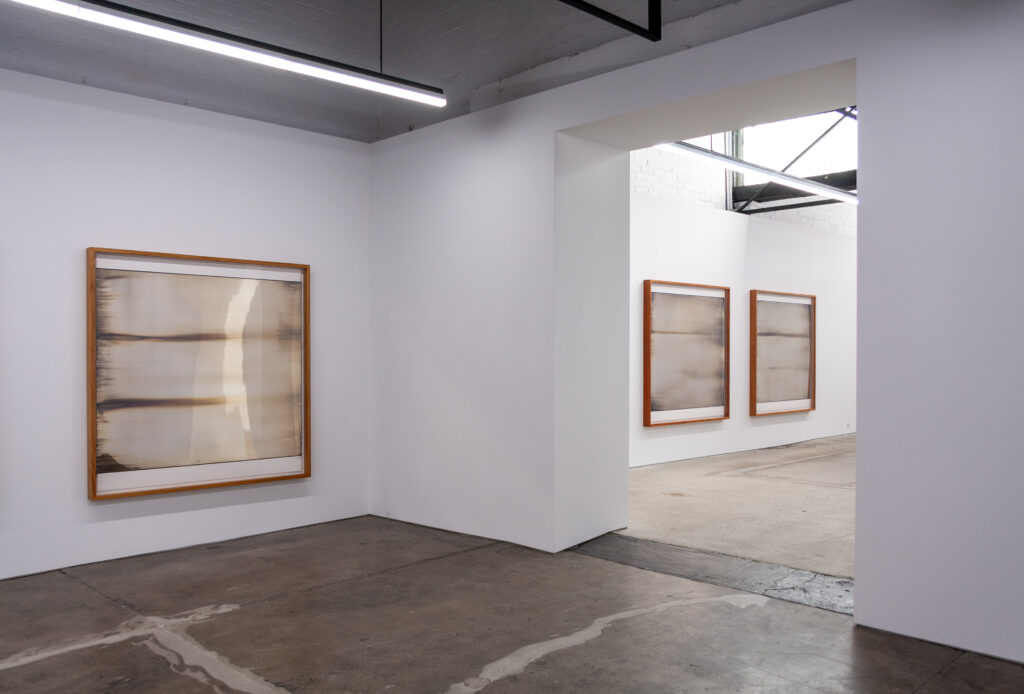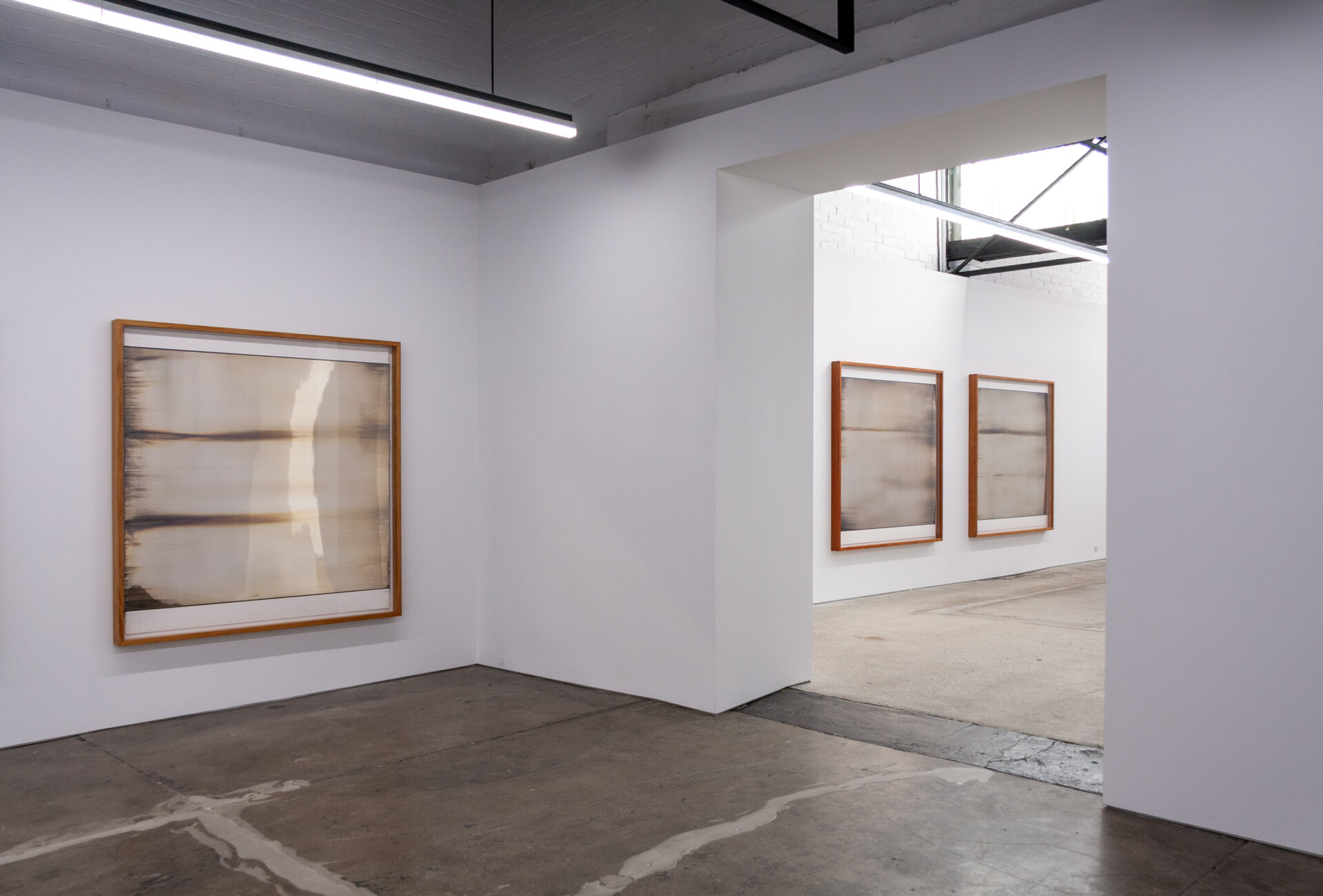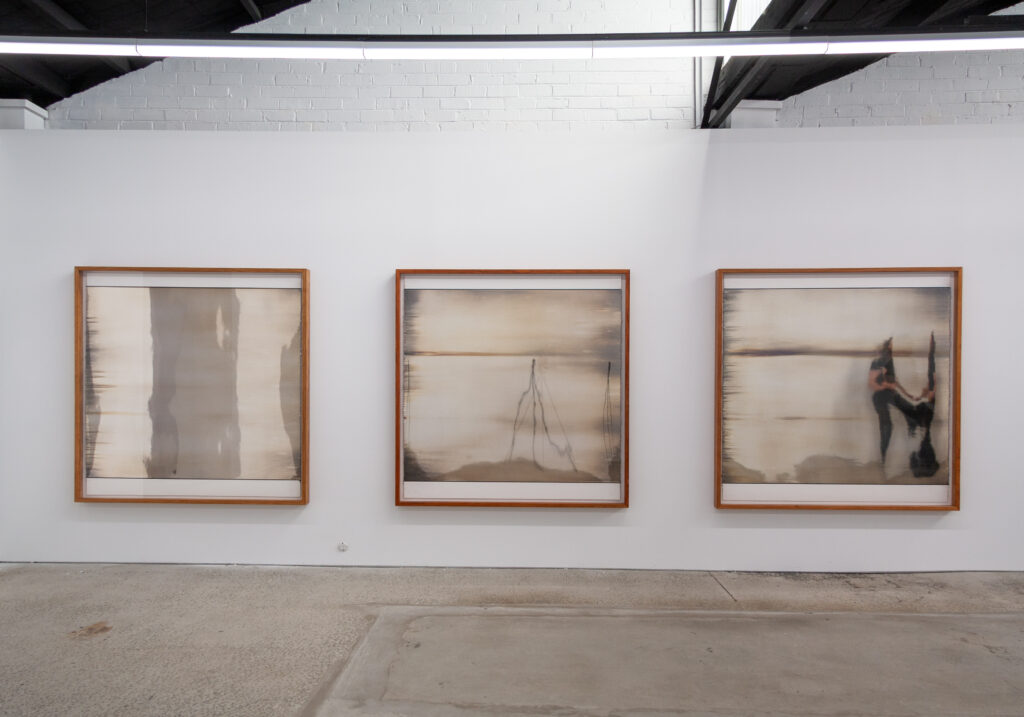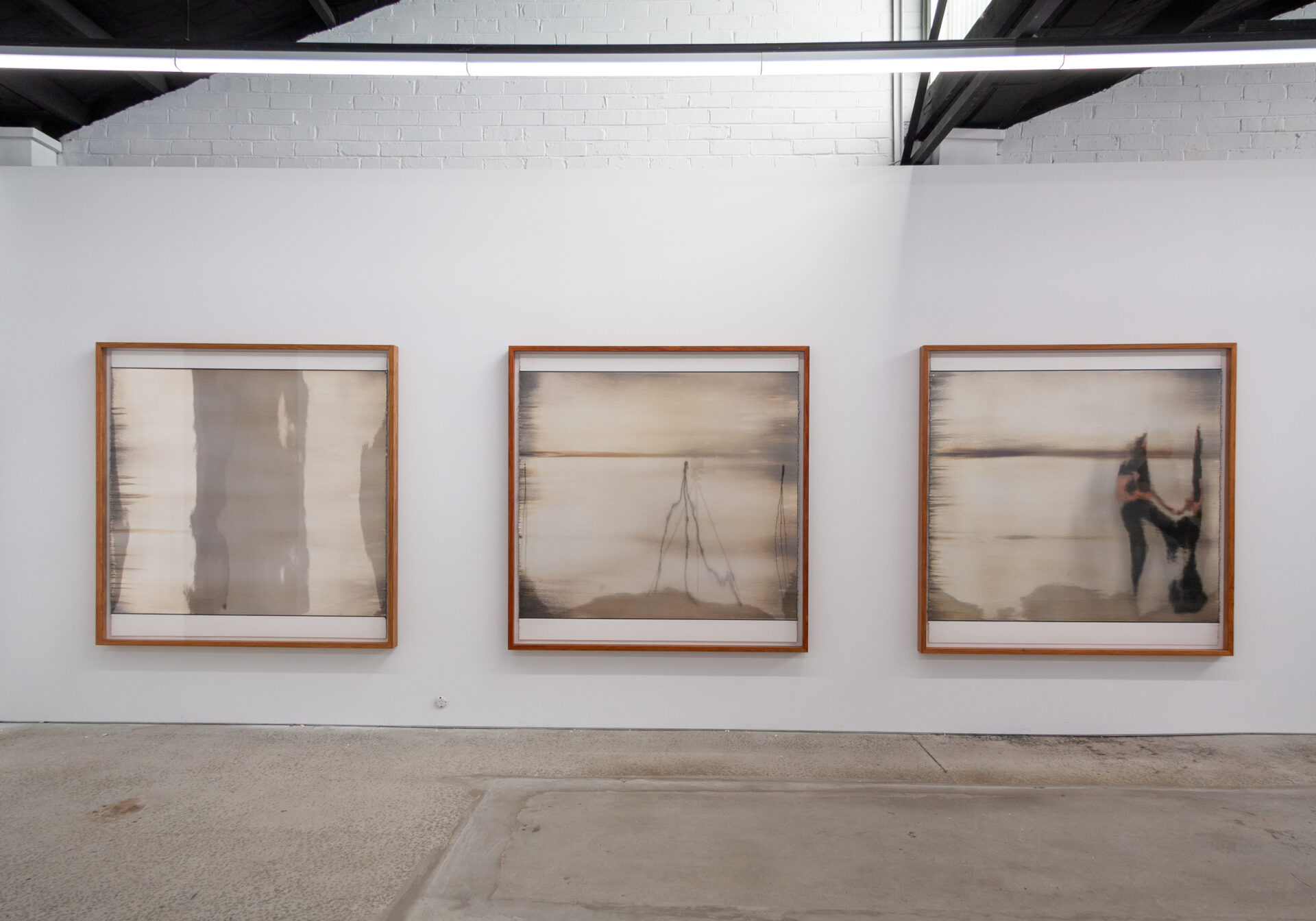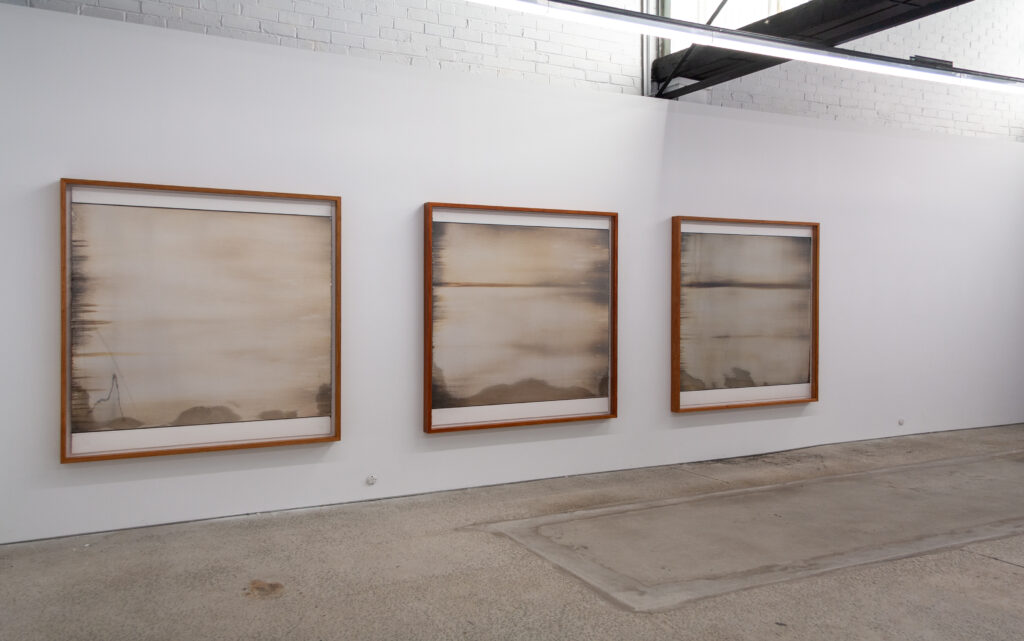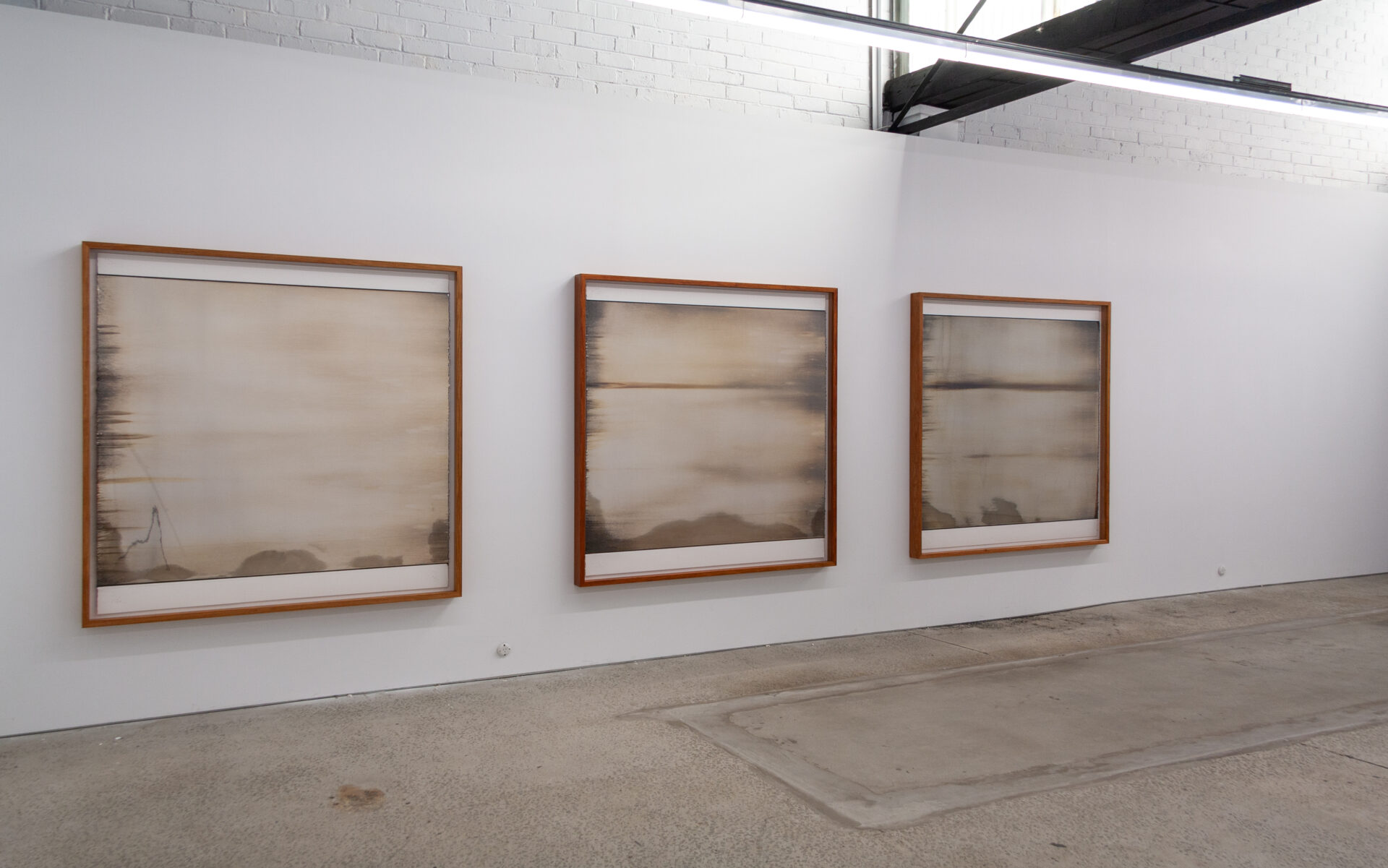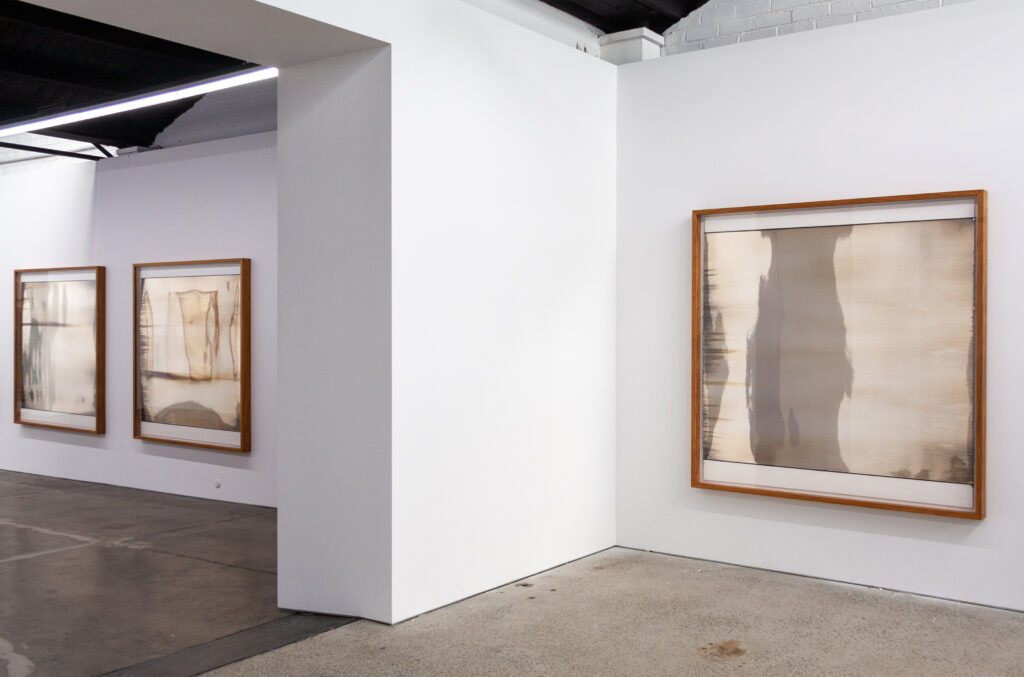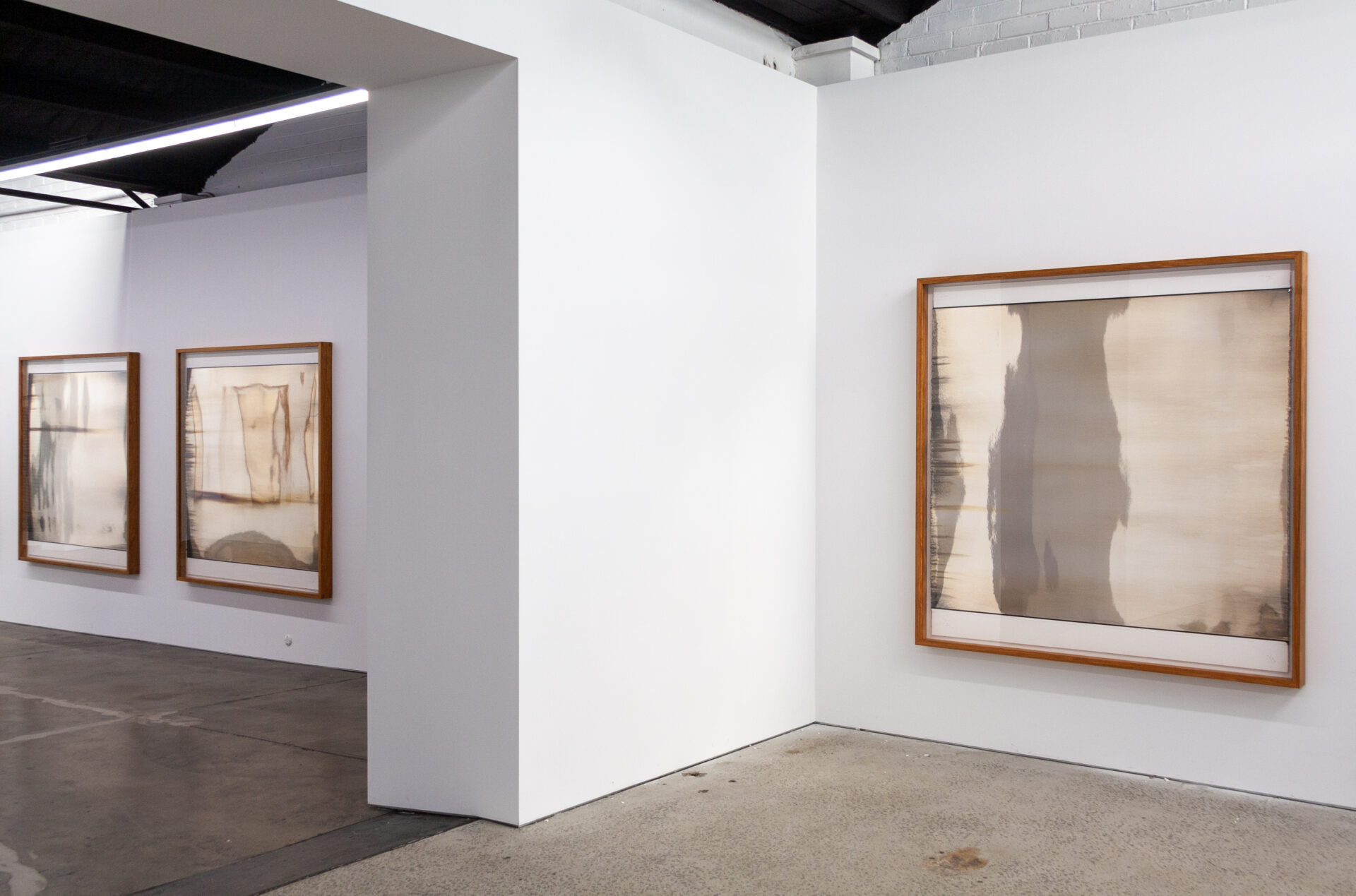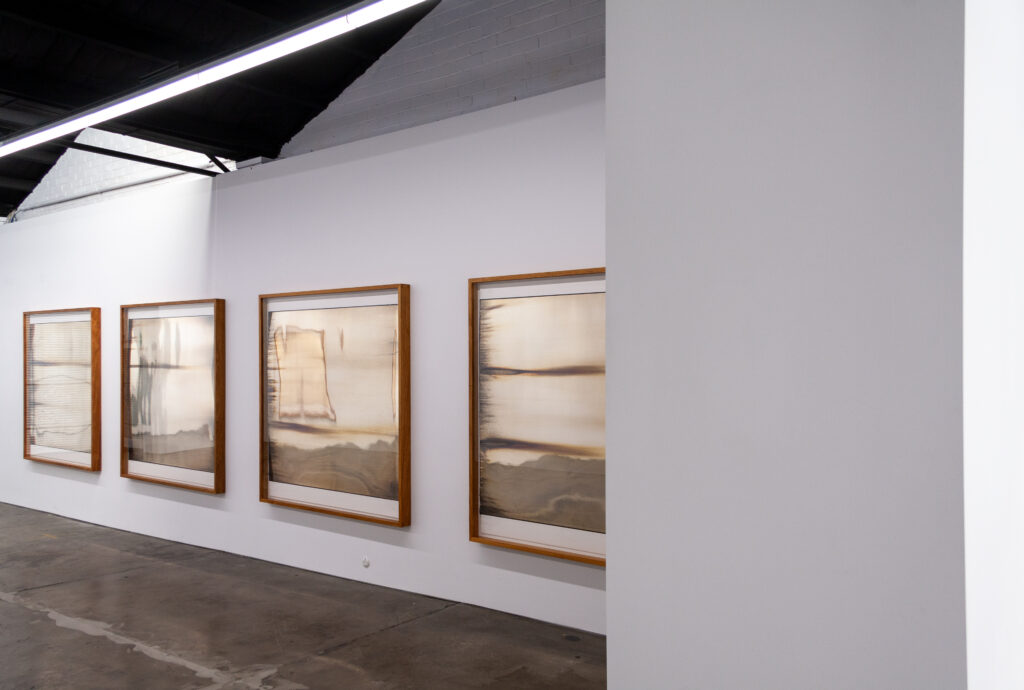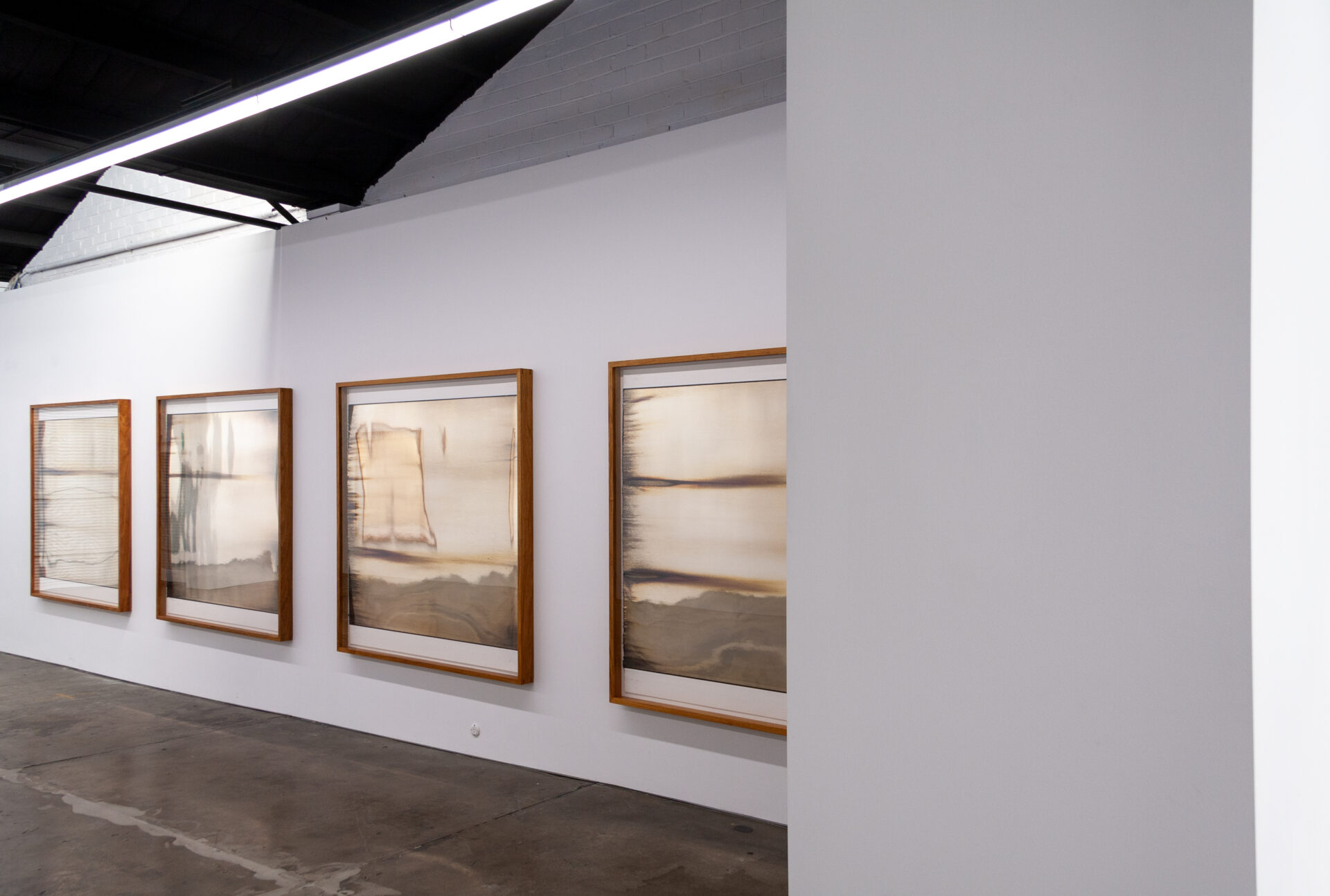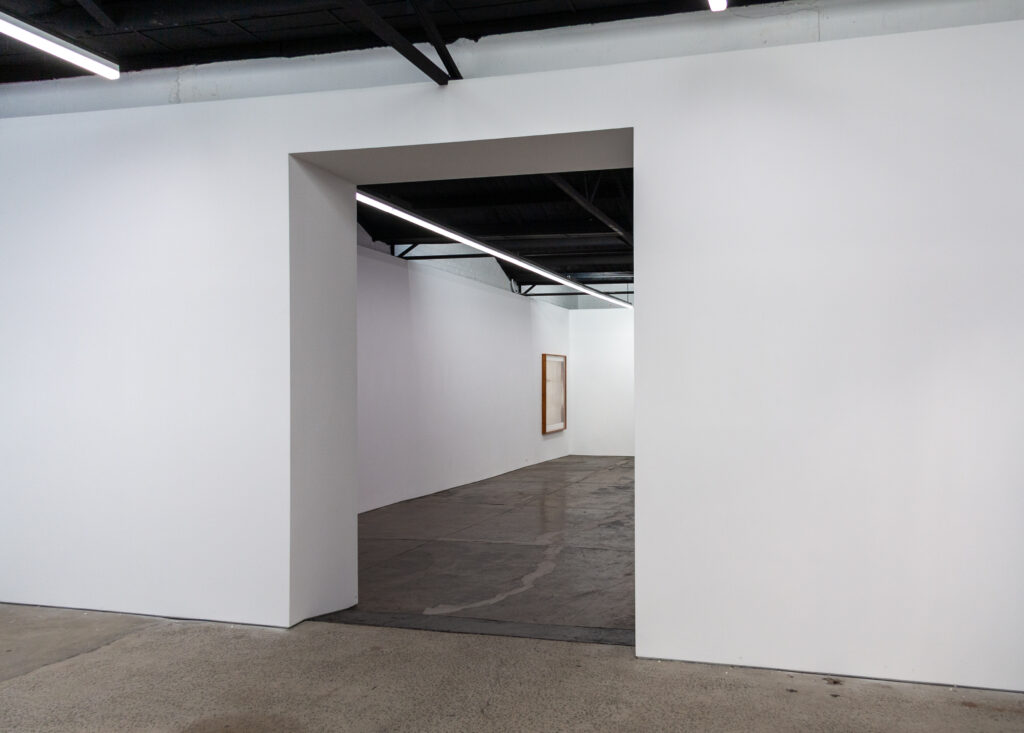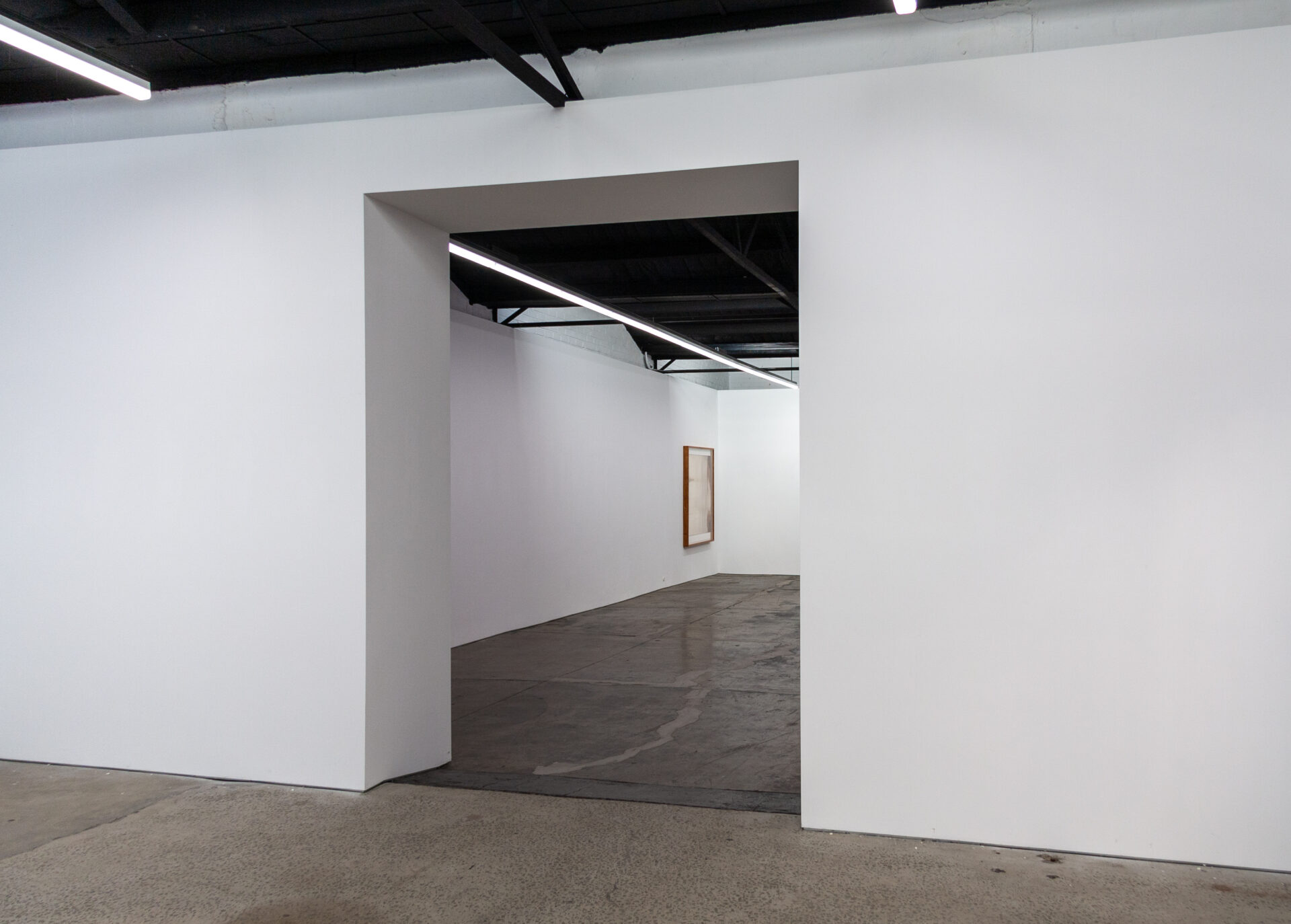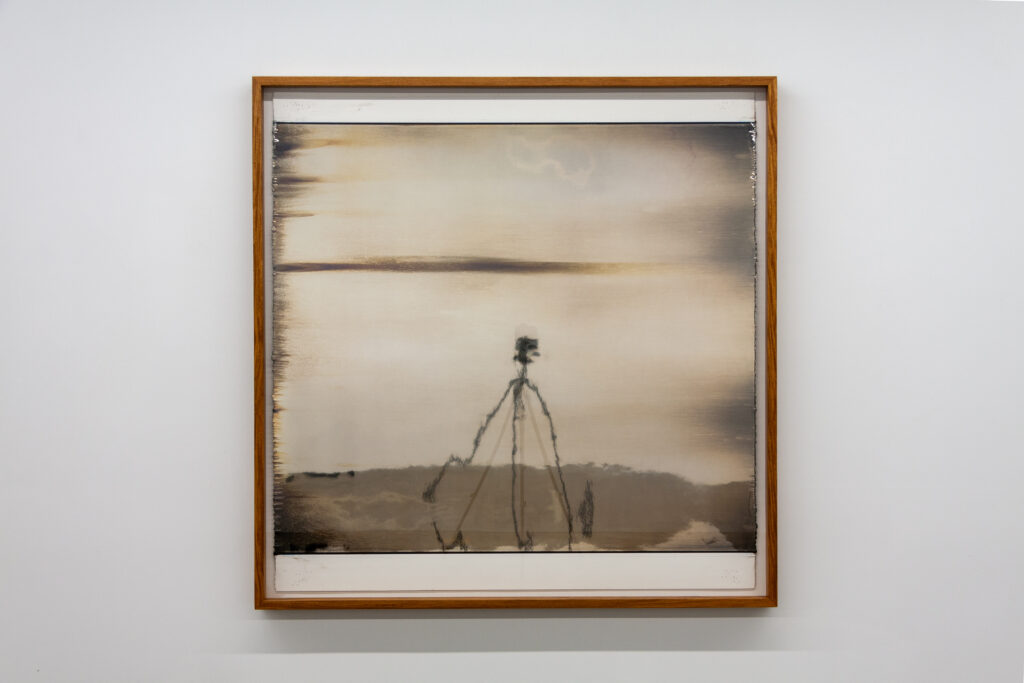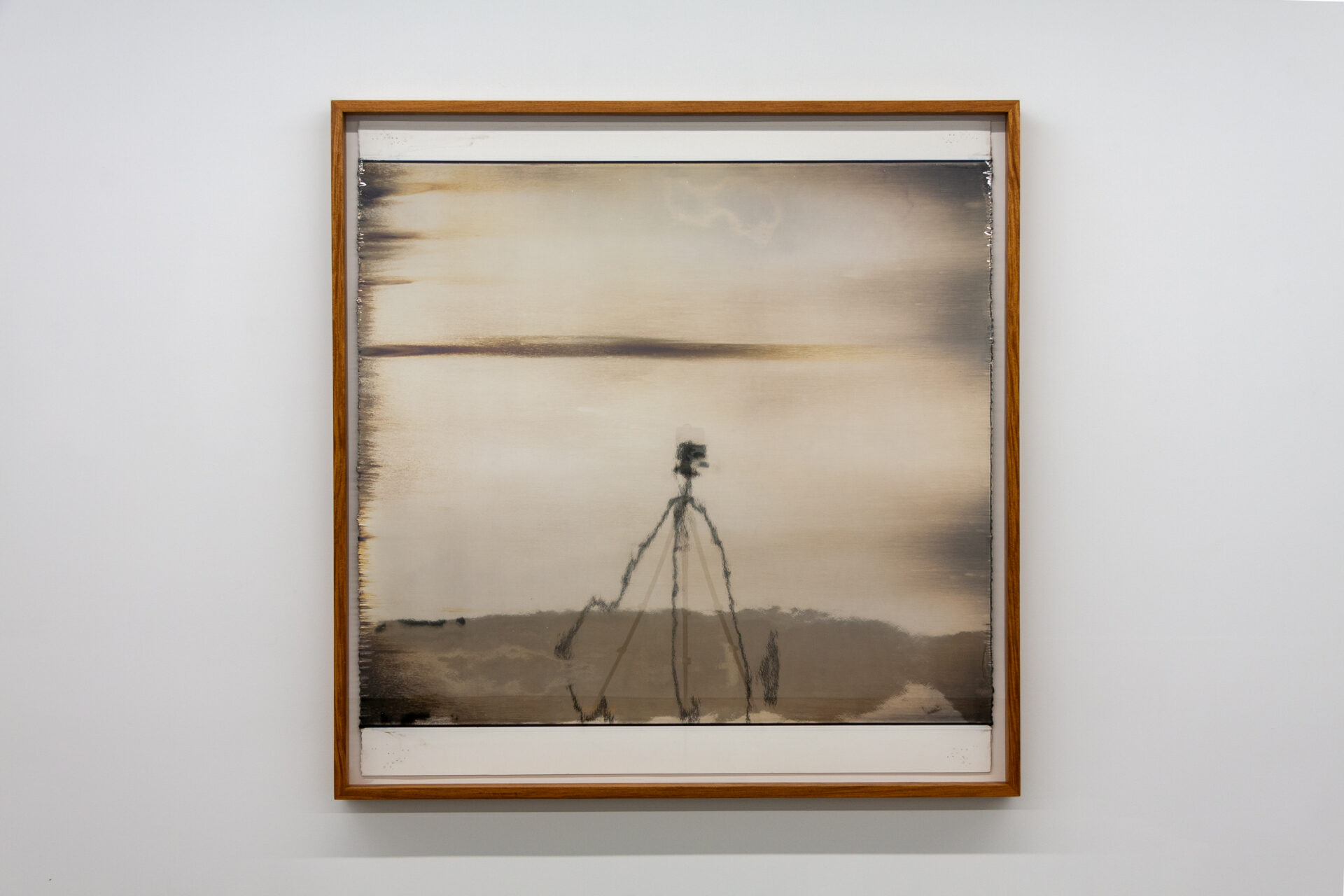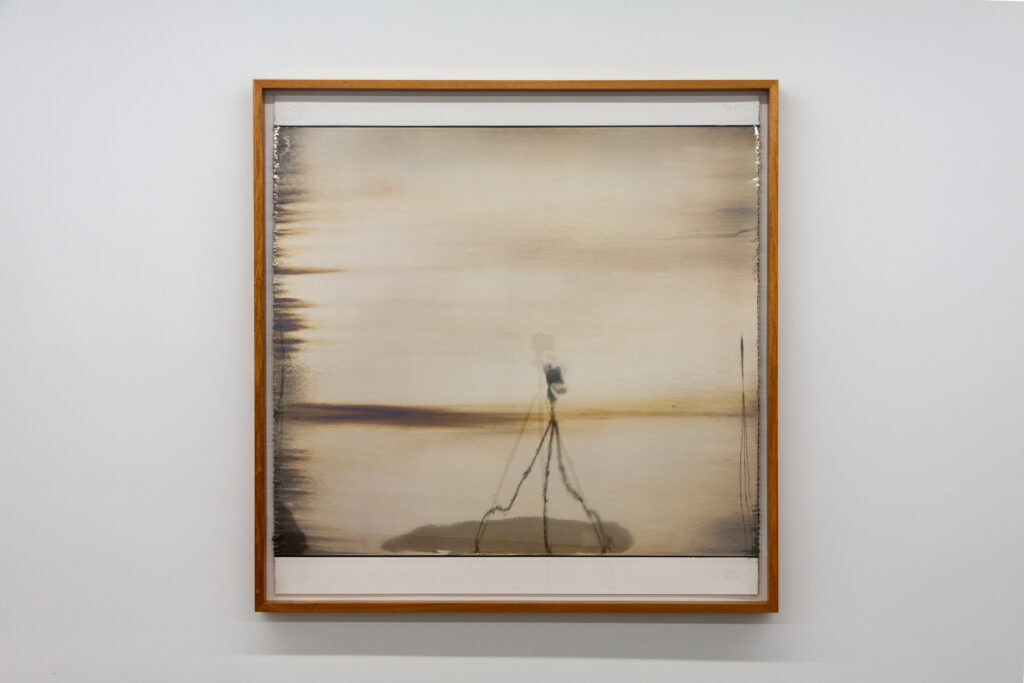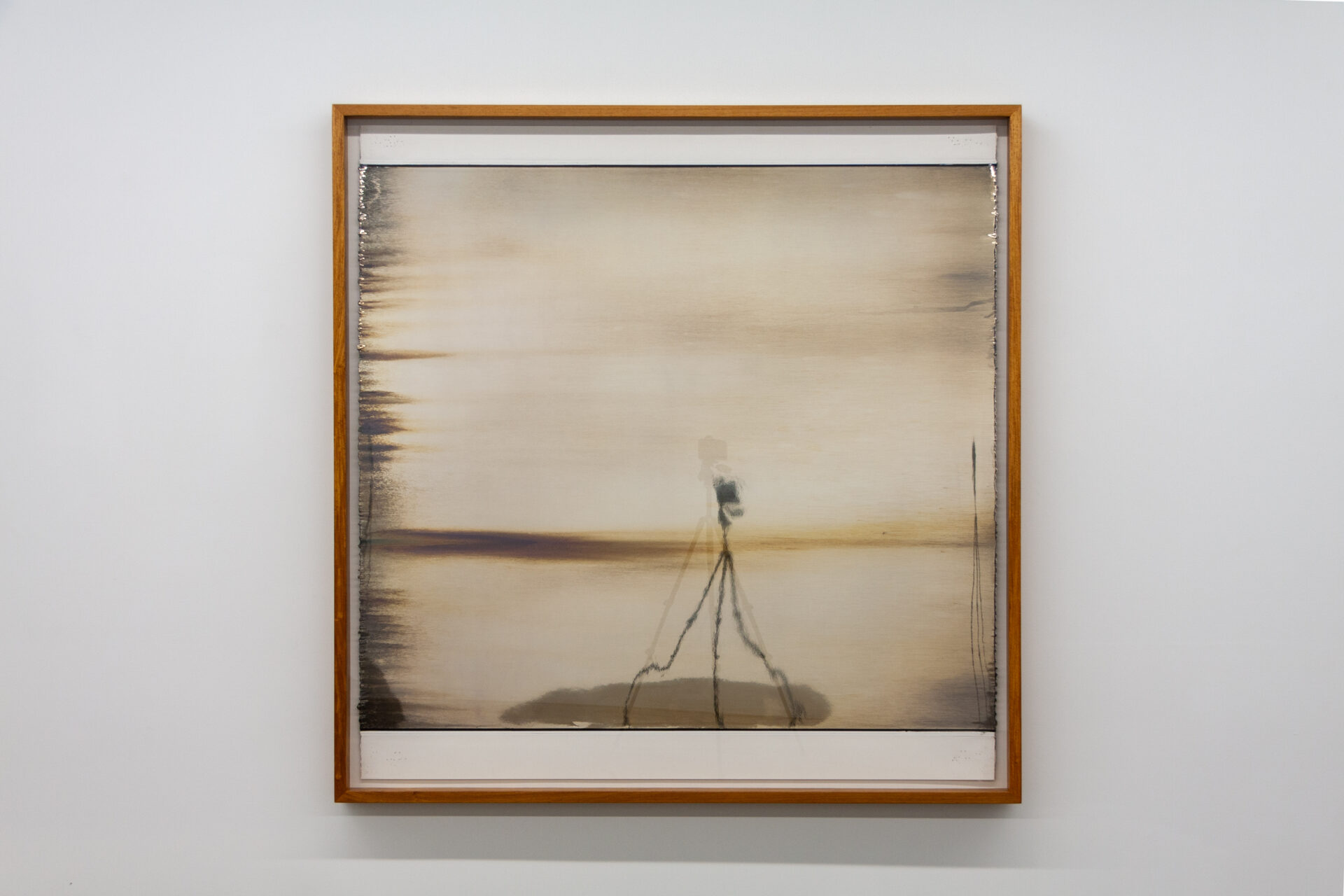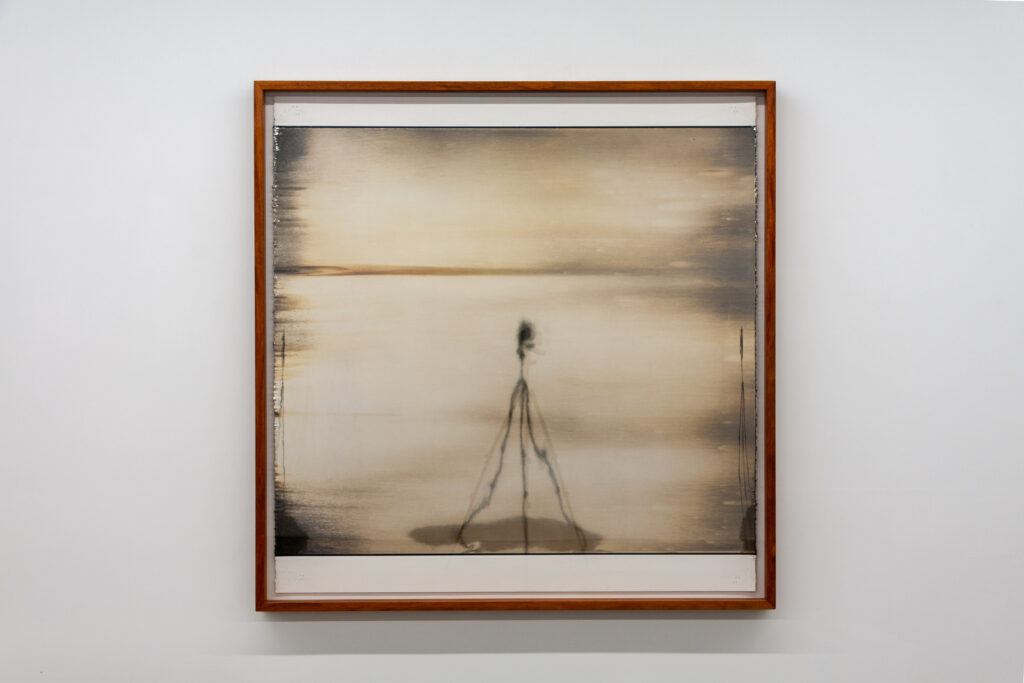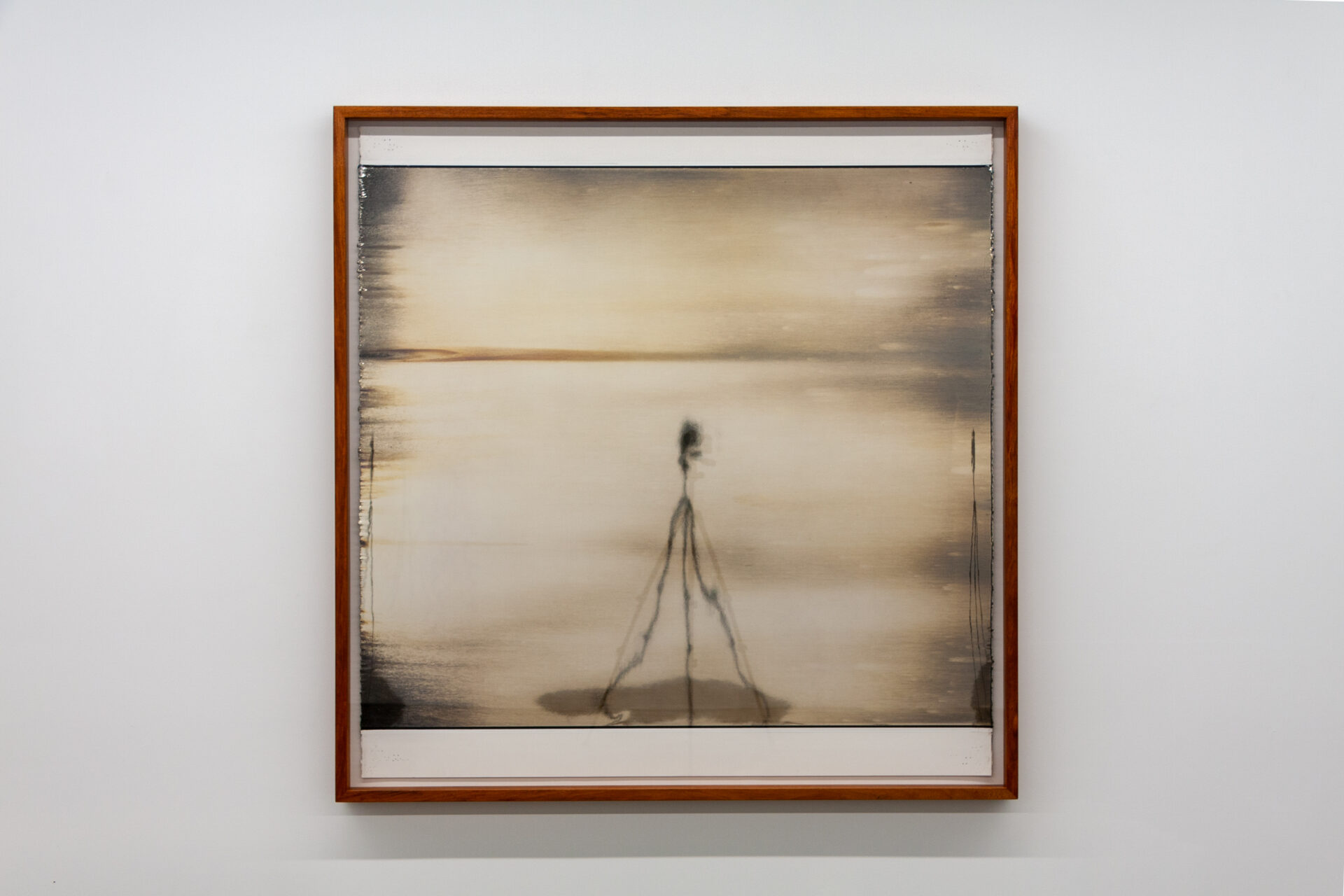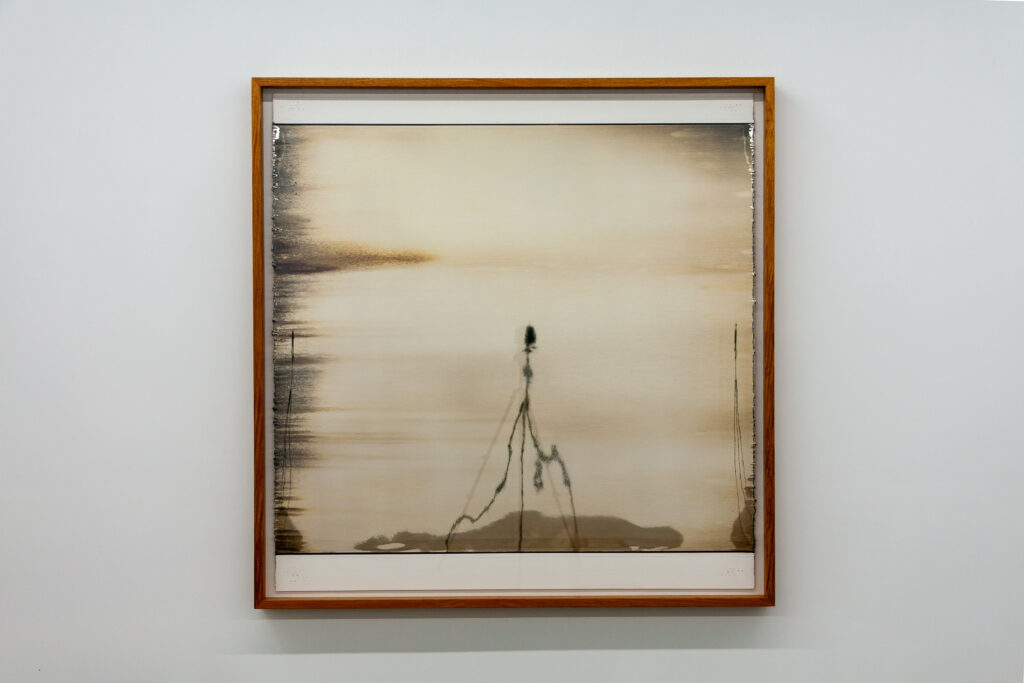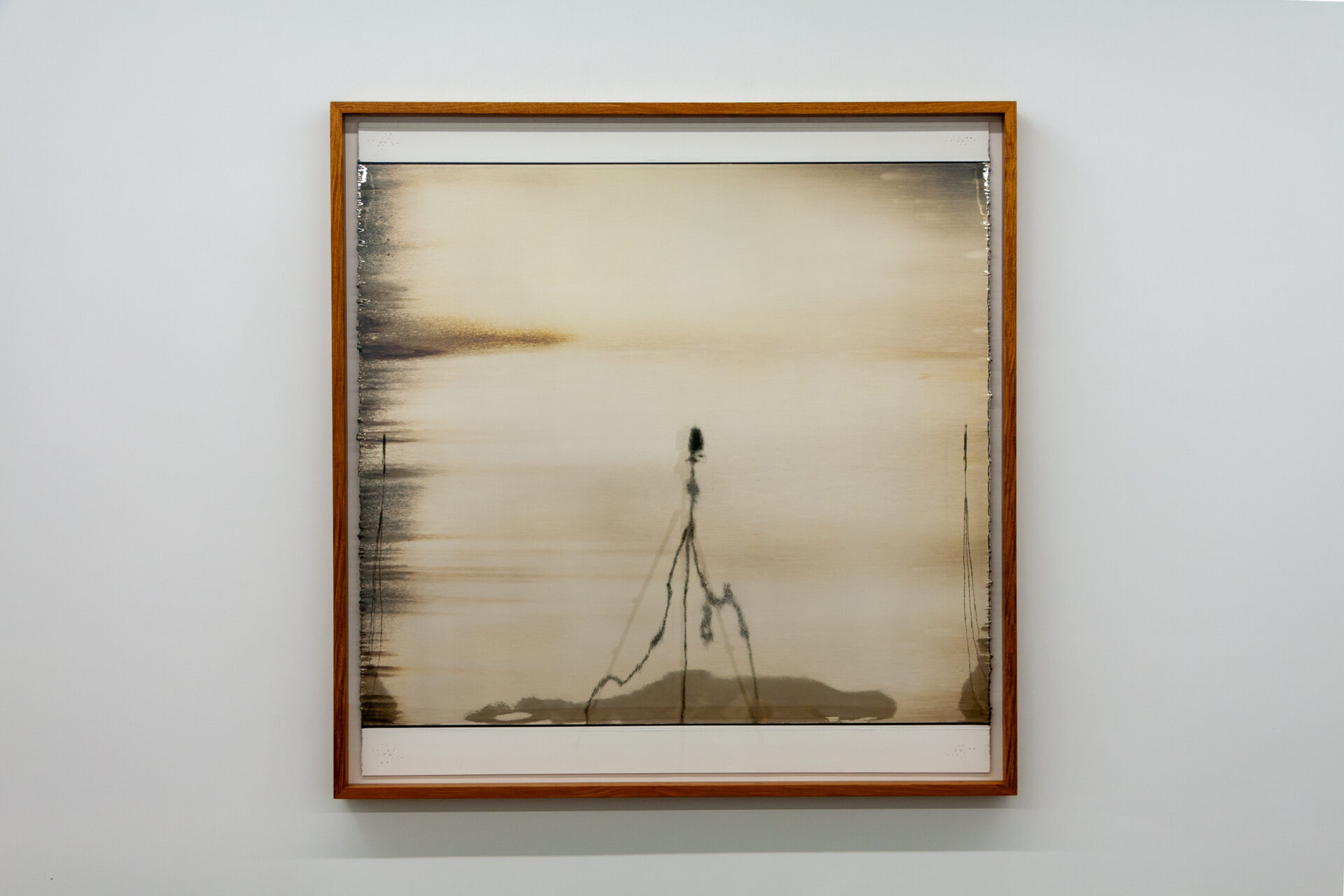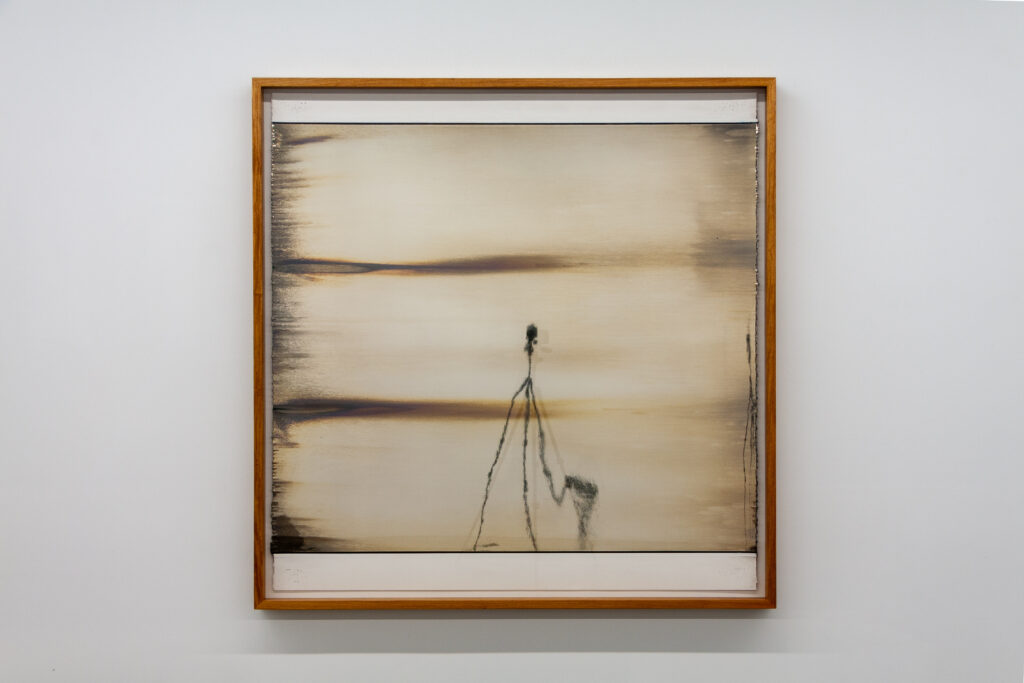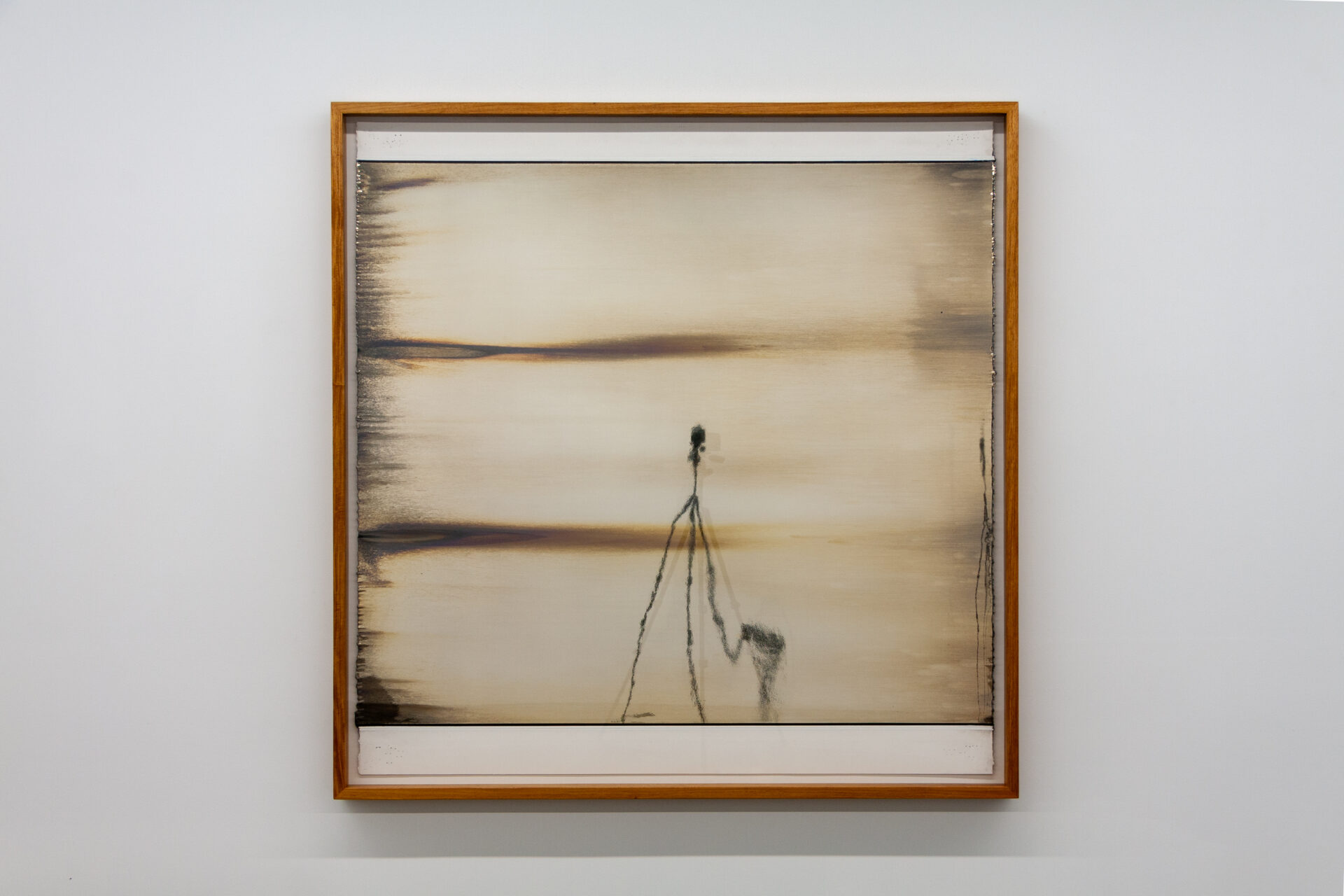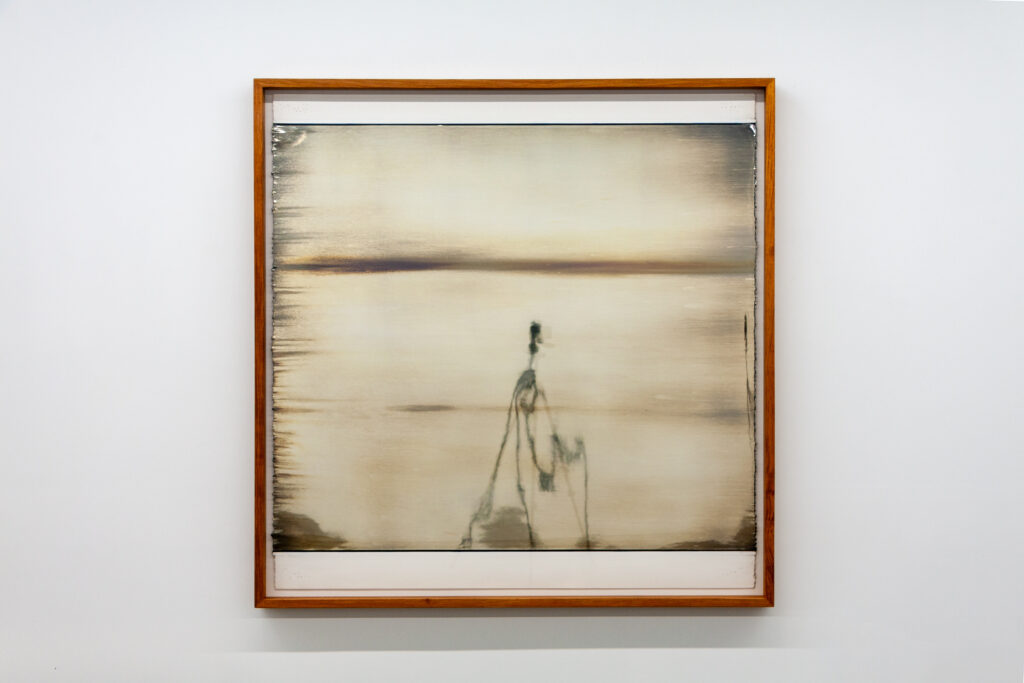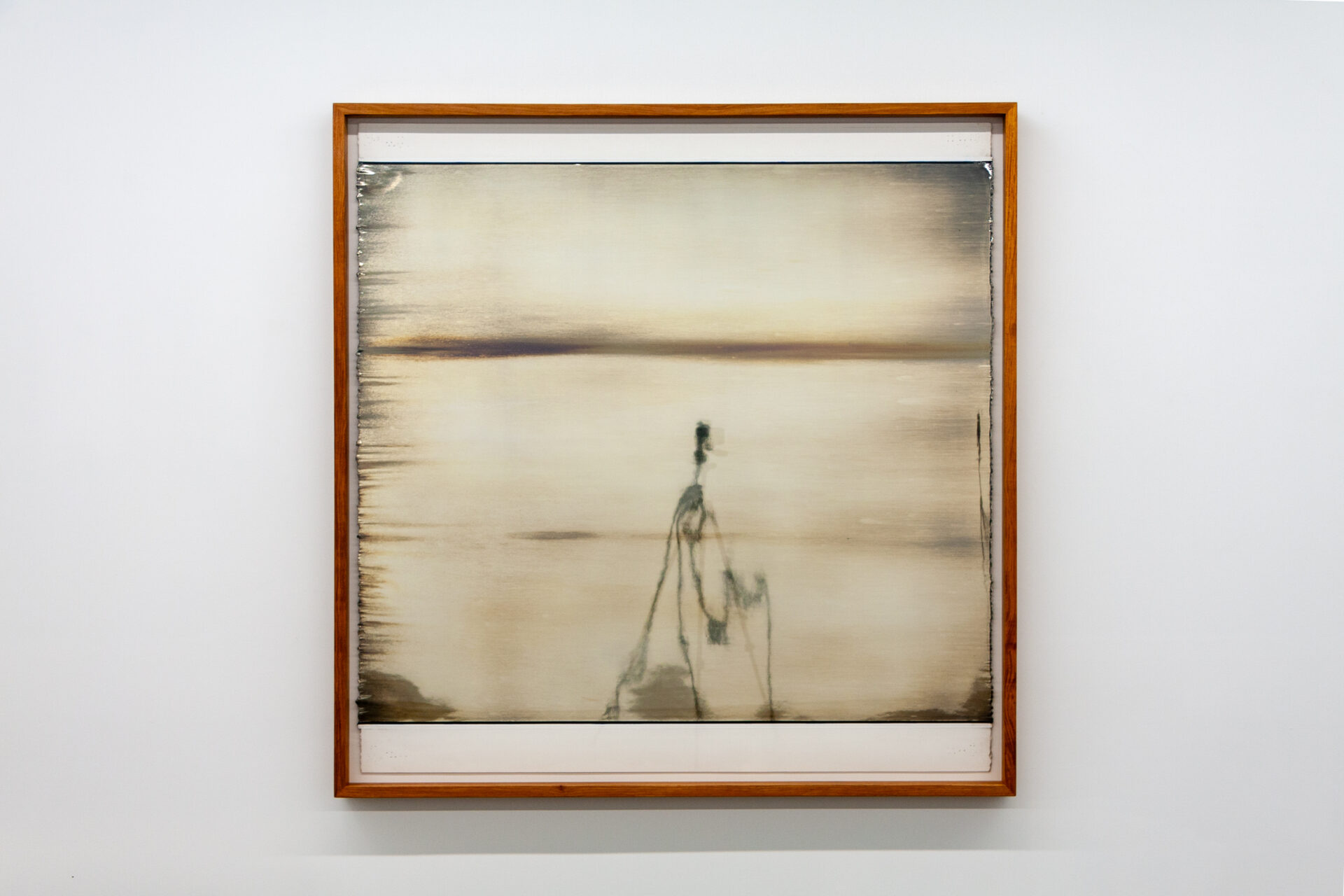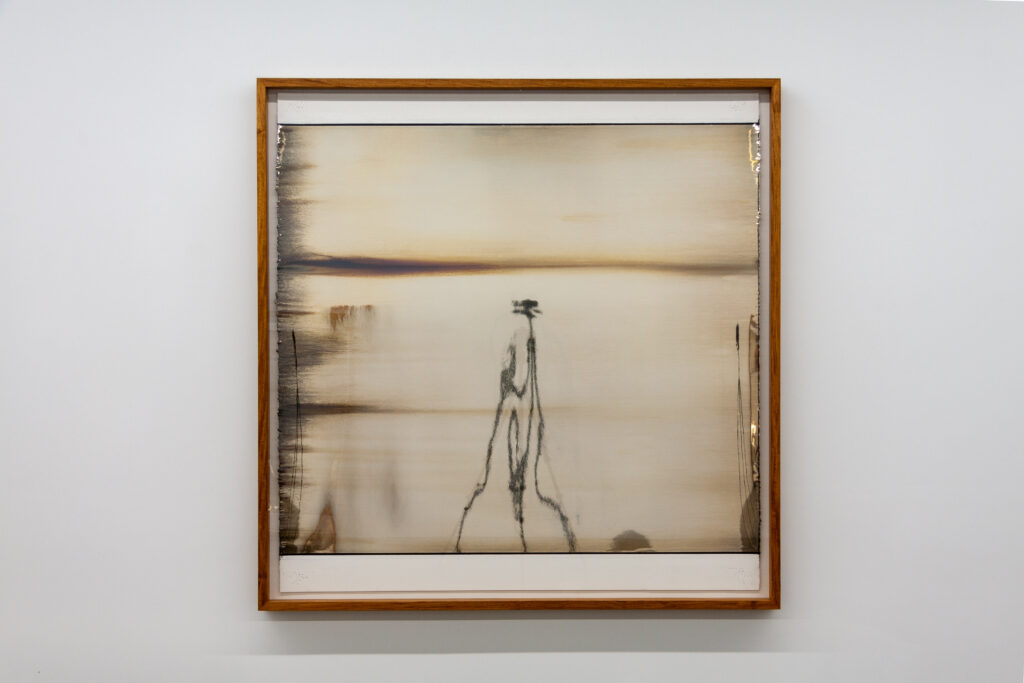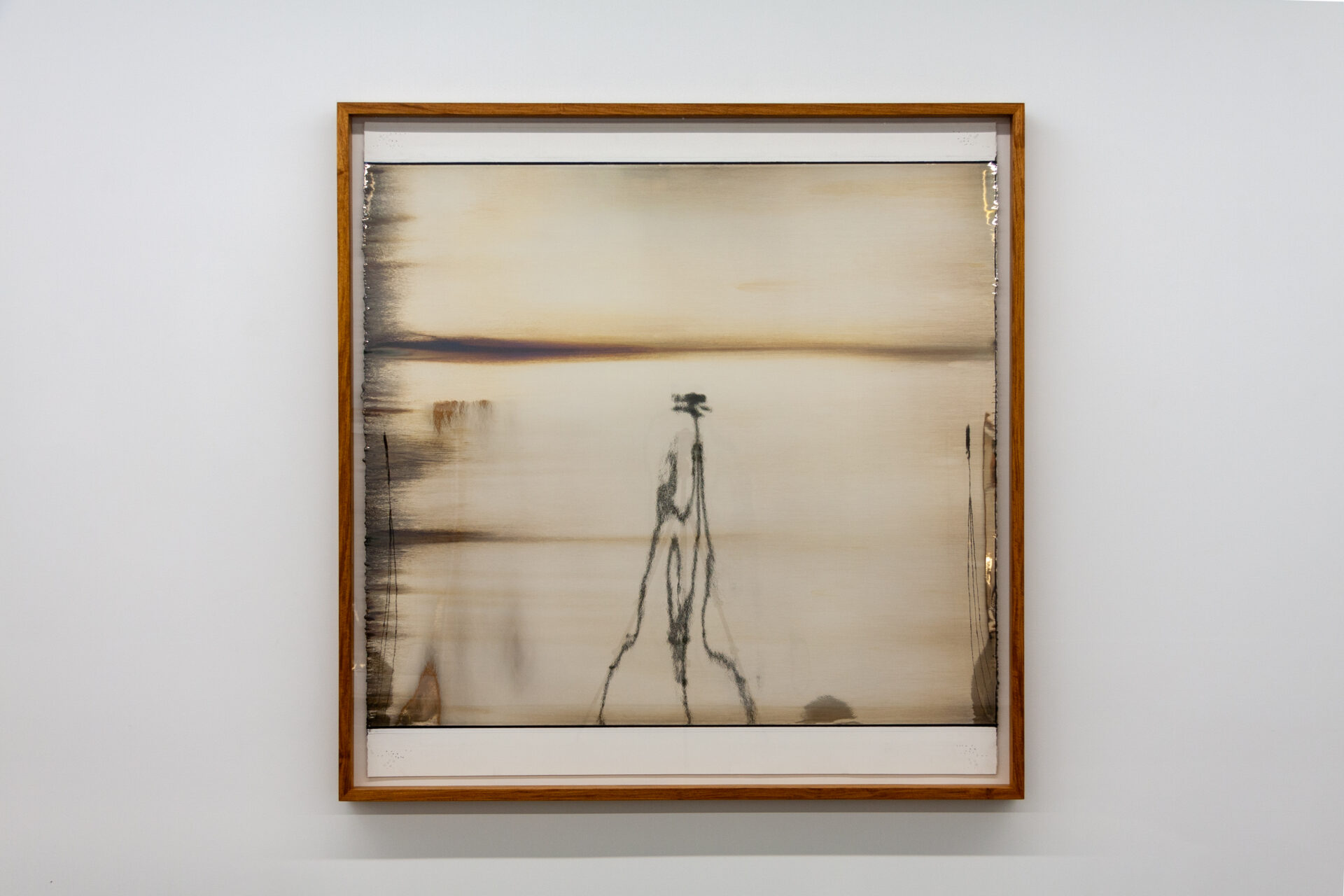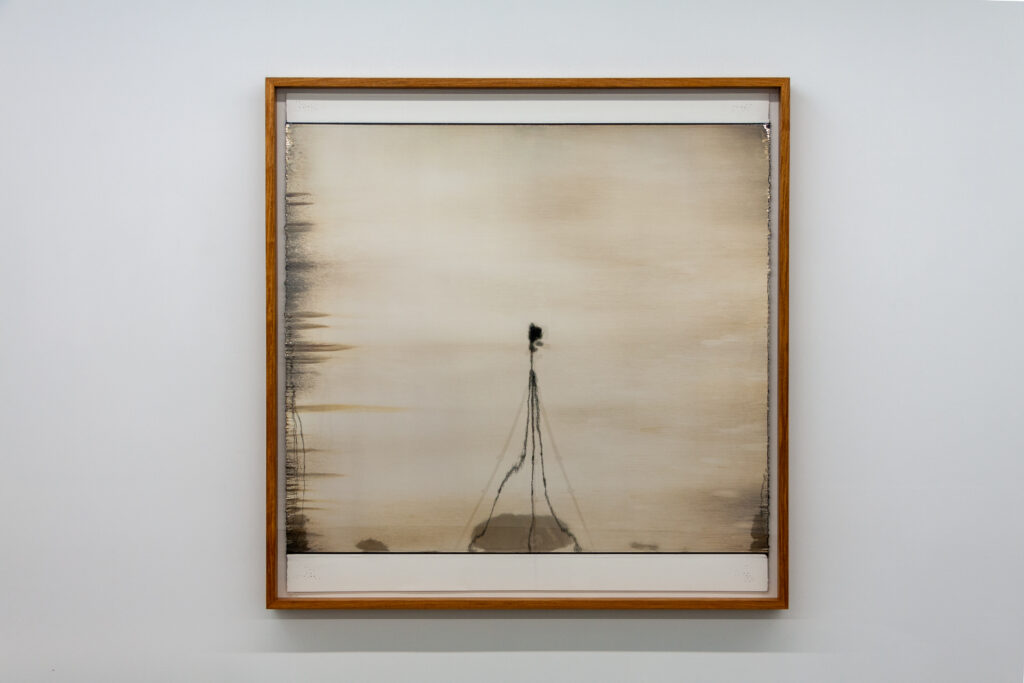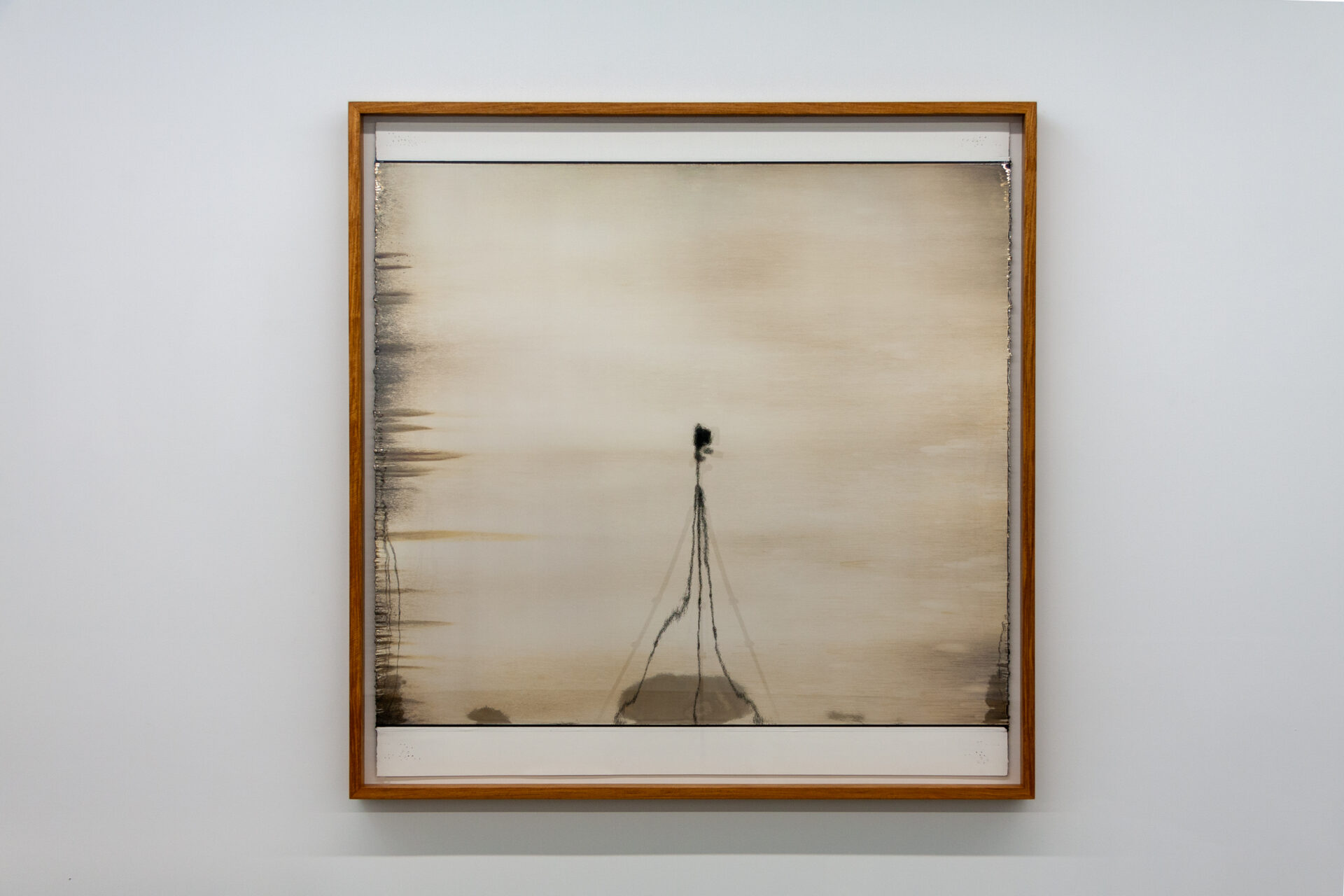Coen Young
Eight Mirrors
30 Sep – 04 Nov 2023
These pictures are complex and confusing, alluring and captivating; there are eight of them, but each one holds an endless number of possibilities within it. Commonly referred to as “mirror paintings”, these works have come into being as a way for the artist to reflect contemporary culture and diverse models of representation — a device to engage with our world but through a foggy lens. They are mirrors of deception, a quality best described by the greatest cataptromaniac, Jorge Luis Borges:
I, who have felt the horror of mirrors
Not only in front of the impenetrable crystal
Where there ends and begins, uninhabitable,
An impossible space of reflections,
The term catoptromancy references the art of divination using a mirror, explored in numerous cultures such as Ancient Egypt, China and India, and in Ancient Rome the priests who enacted this went by the name, specularii. The specularii would use polished metal mirrors to gaze into the future and seek guidance from the gods — speculators of the future. “For the cataptromanic mirrors are partitions that no longer reflect worldly reality but rather end the once-bilateral relation between this ‘circumscribed existence’ and the world at large”, notes author Jason Bahbak Mohaghegh. Again, they are deceptive.
To talk of the materiality of these mirrors is first to talk of them as paintings — a sage label — but they are equally works on paper and cameraless photographs. Though perhaps they are best viewed as alchemical experiments containing complex gestures. The surface we view — this foggy reflective lens — is made with silver nitrate, but its complexity is the result of a labour-intensive process of layering and working back into the substrate. Viewers are inescapably drawn in, only to be taken aback, finding confusion as their reflection and understanding of the work warps within the artist’s (cataptromaniac’s) beguiling take on abstraction.
